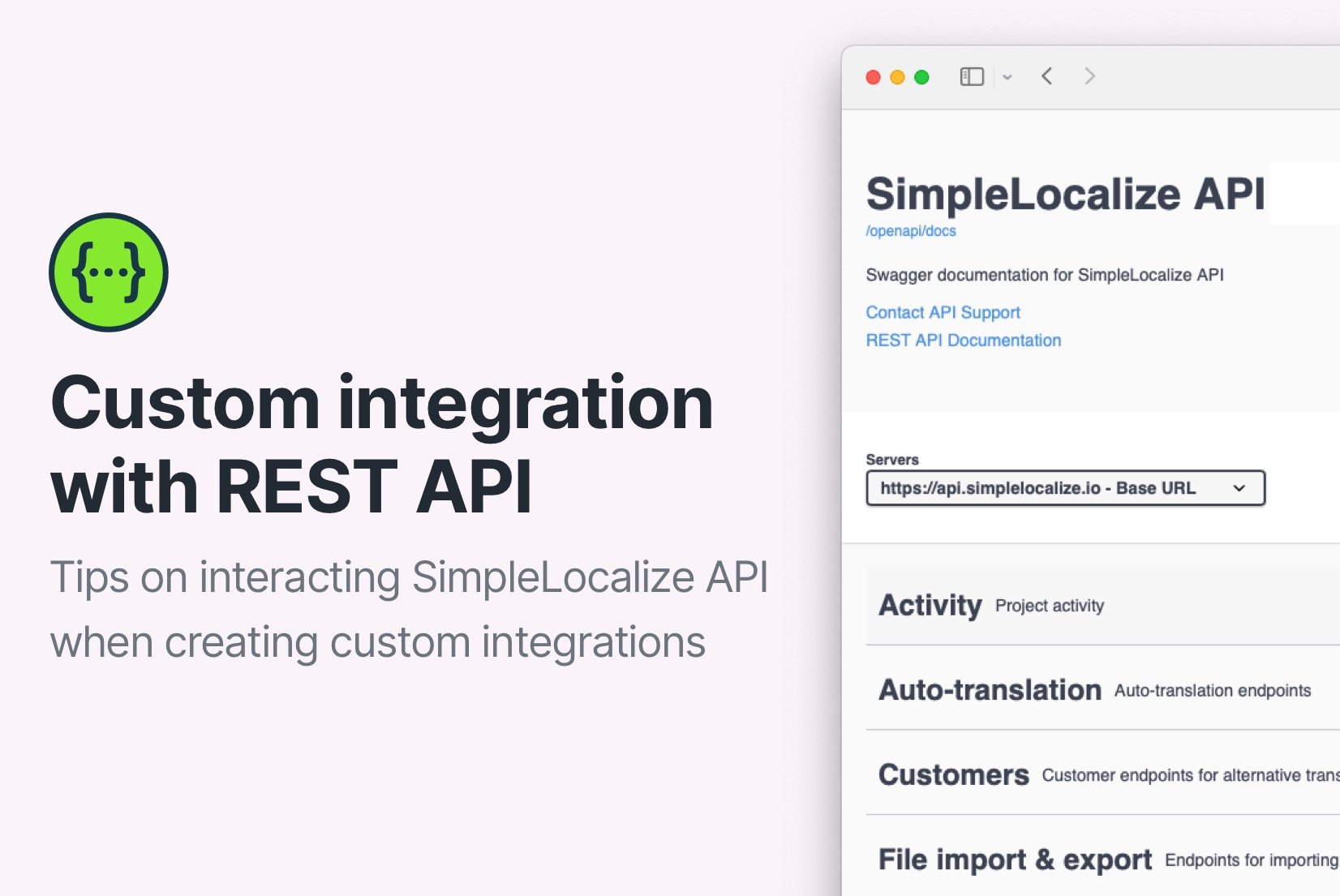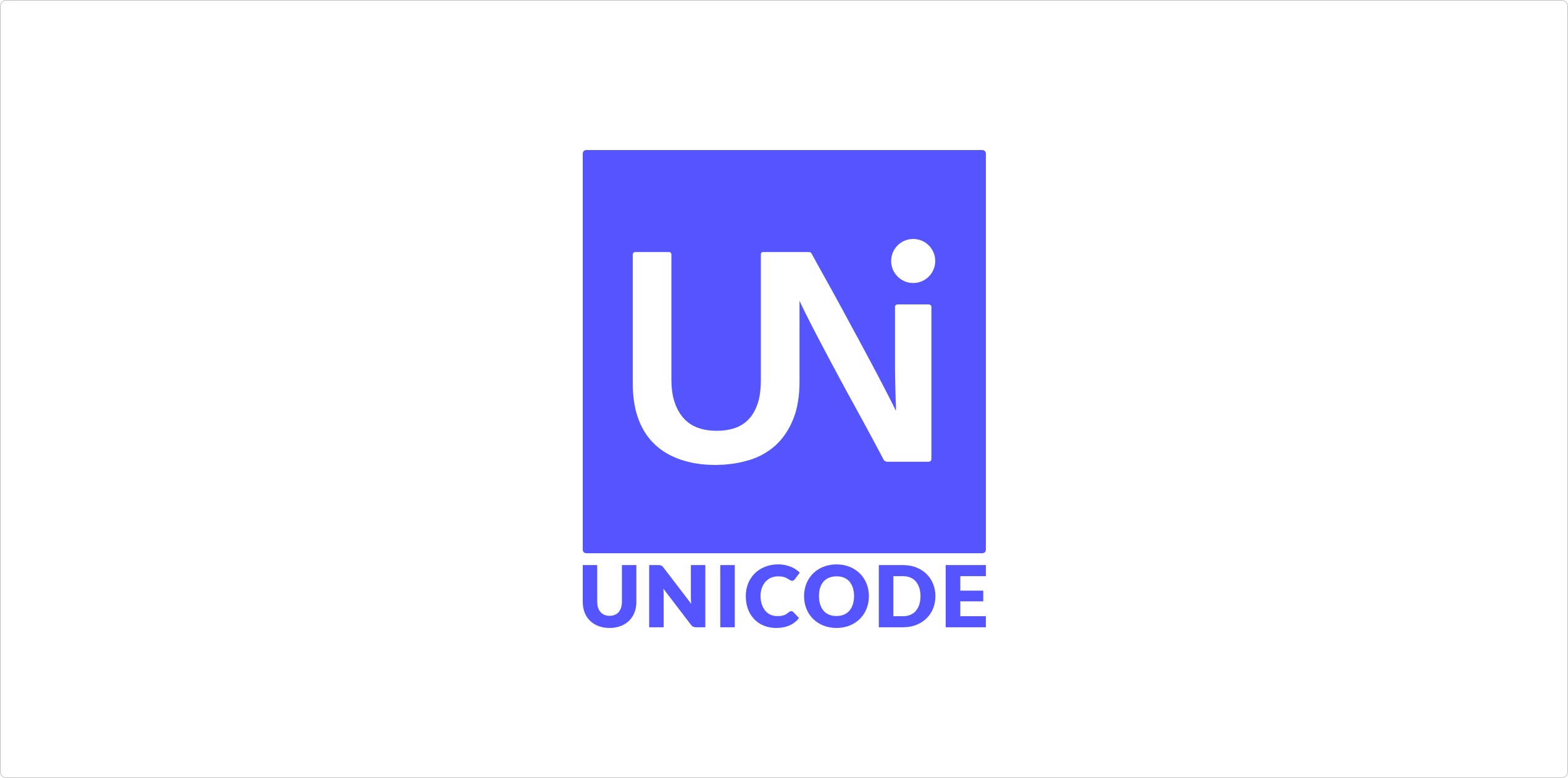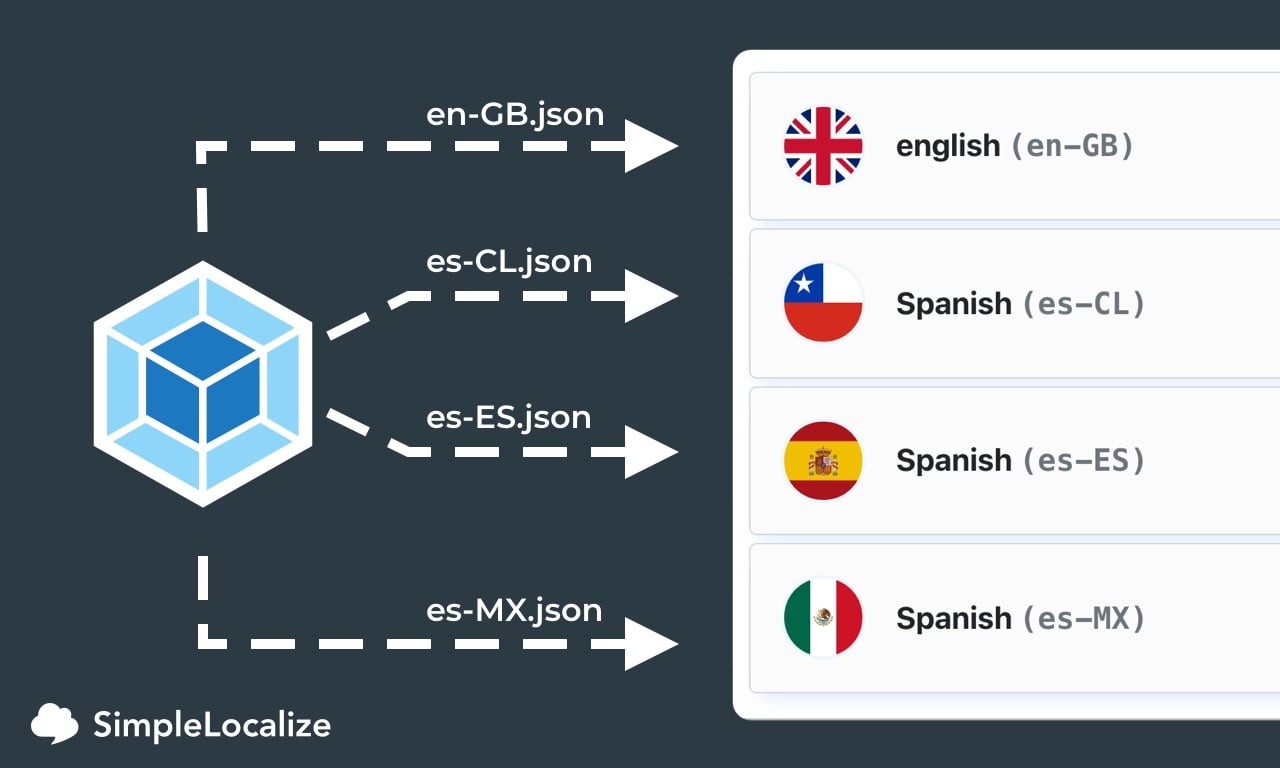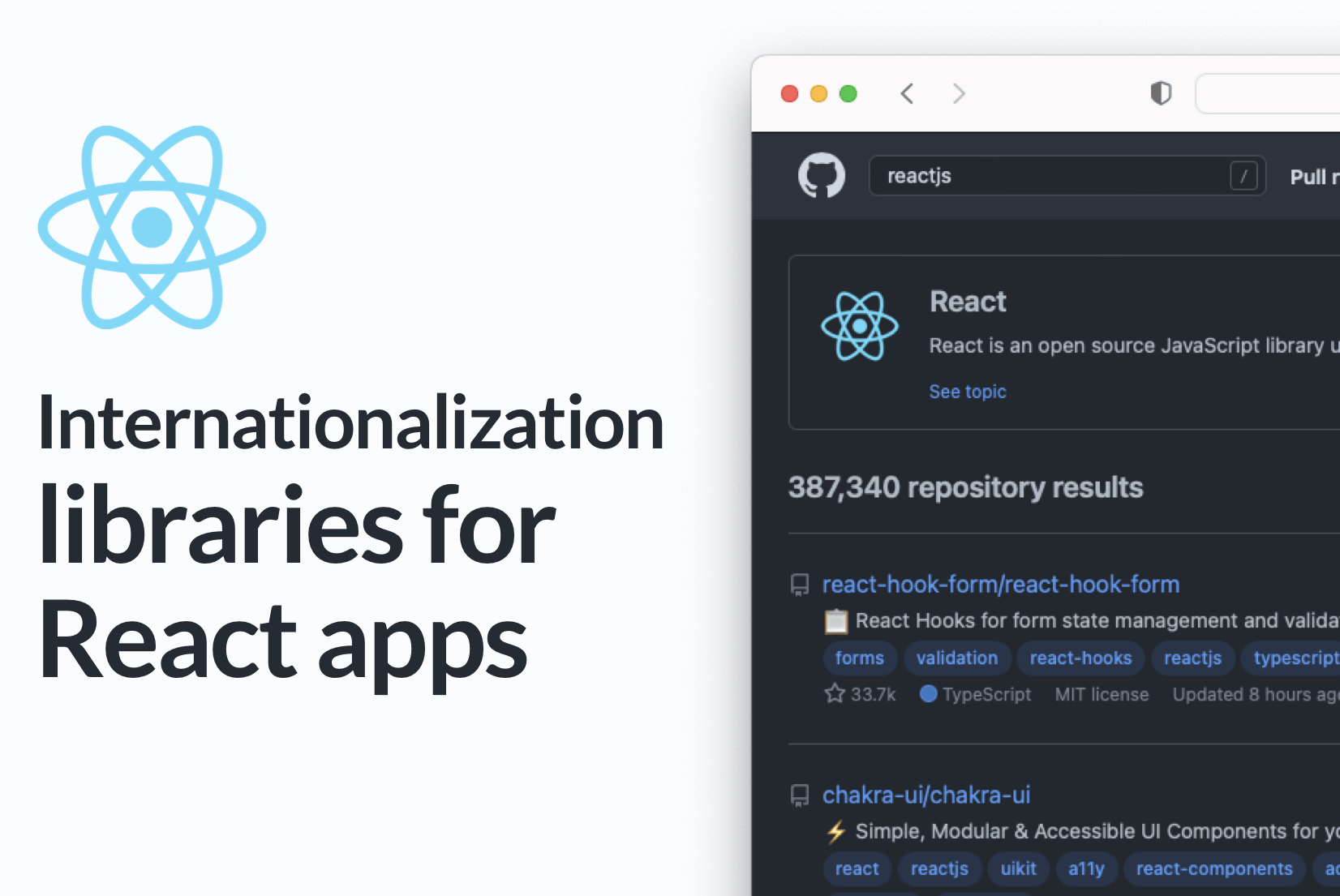Translate JSON files with ease
Upload your JSON translation files to SimpleLocalize,
use auto-translation and download ready-to-go translation files in seconds!
{
"en": {
"CREATE_ACCOUNT": "Create account",
"SIGN_IN": "Sign in",
"WELCOME_TO_THE_JUNGLE" : "Welcome to the jungle"
},
"es": {
"CREATE_ACCOUNT": "Crear cuenta",
"SIGN_IN": "Iniciar",
"WELCOME_TO_THE_JUNGLE": "Bienvenido a la jungla"
}
}
Why use JSON for translations?
JSON is the most popular format for storing translations in different type of projects. It works great for web and mobile apps and games localization. Storing translations in JSON files makes it much easier to work with and to manage translations from a project building and management perspective. Using JSON files for translations has many benefits:
- universal file format that you can go with anywhere,
- it is known and widely used among developers,
- it's easy to read even by non-technical people,
- simple key-value structure.
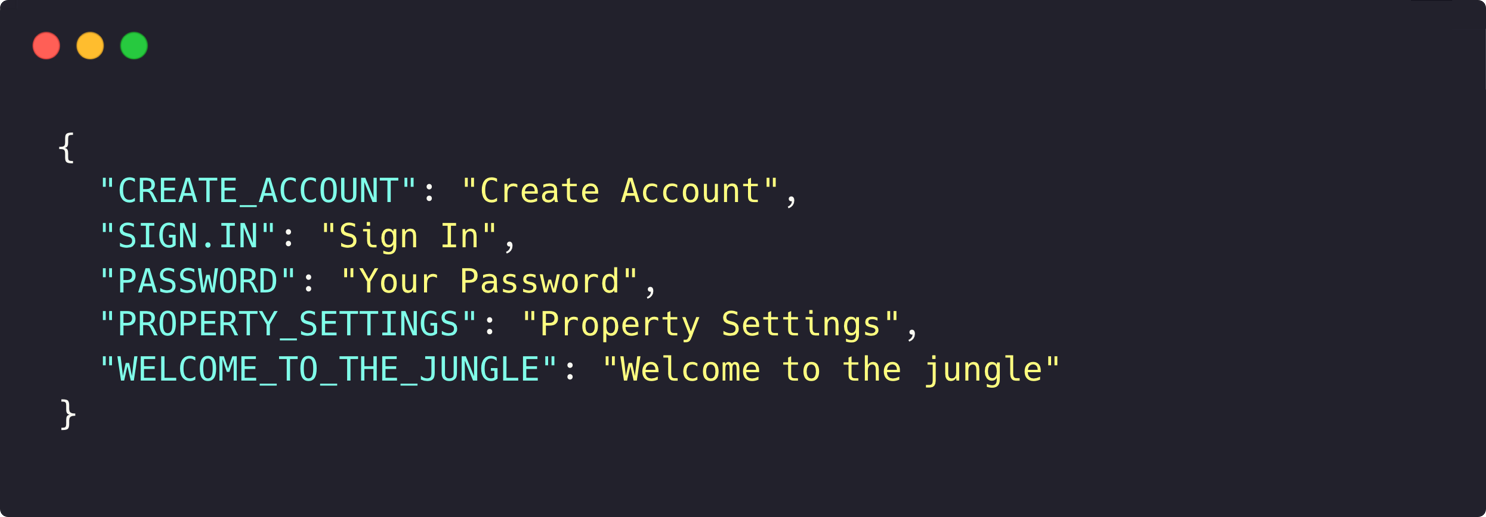
How to use JSON files for translations?
JSON files are straightforward for translation management. There are different ways to manage translations with JSON, so you can choose which one works best for you and your project:
- Single-language JSON - all translations for a language are stored in a single file. It contains a translation key set by developer and localized message (our translation). Each language has a separate JSON file.
- Multi-language JSON - translations for all languages are stored in one JSON file. The file structure contains language as a key and translation as a value.
- Custom SimpleLocalize JSON - this JSON format allows storing translation with additional information, like description for translators or extra key details.
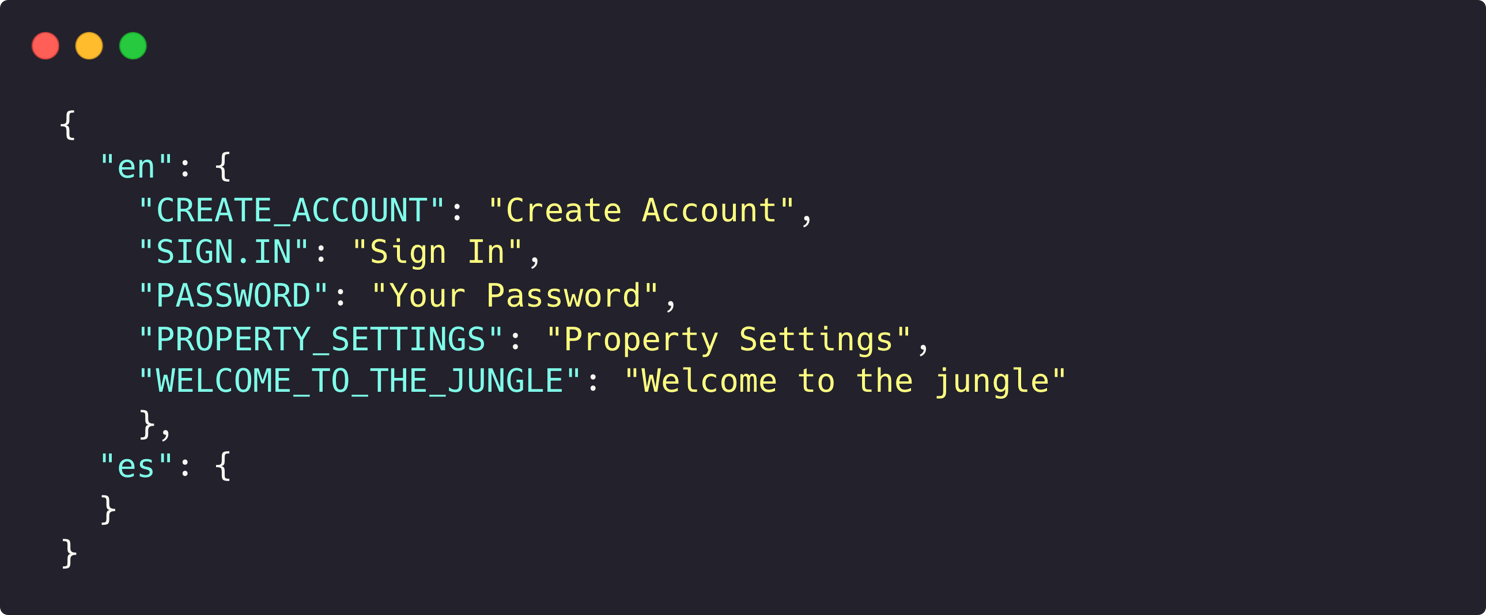
How to translate JSON file?
To translate JSON files with ease, use SimpleLocalize translation management with free community plan. It's a perfect way for translating smaller projects. The online translation editor will help you and translators to work efficiently on translations, and the import/export process won't cause you any trouble.
First, create account in SimpleLocalize and add a new project. Then, upload your translation files or use simple CLI command for uploading translations.
Second, translate your project. Add new languages, use translation editor and try the auto-translation featurewhich will do the whole translation job for you in seconds. Finally, download your translated JSON files. You can download them in different formats, like JSON, CSV, or XLSX.
Meet SimpleLocalize
SimpleLocalize is a web-based translation management platform that helps
developers and teams to manage translations in a simple and effective way.

- Auto-translation
- Screenshots with OCR
- AI-powered adjustments
- Built-in Automations
- Markdown support
- Variables highlighting
- Bulk Actions
- Context-aware translations
- Acceptance statuses
- Customizable view
- Spreadsheet view
- Text summaries
Auto-translation
Translate your application into multiple languages with just a few clicks. Choose from OpenAI ChatGPT, Google Translate or DeepL translation providers to translate your texts. Adding support for new languages has never been easier.
Learn more about auto-translation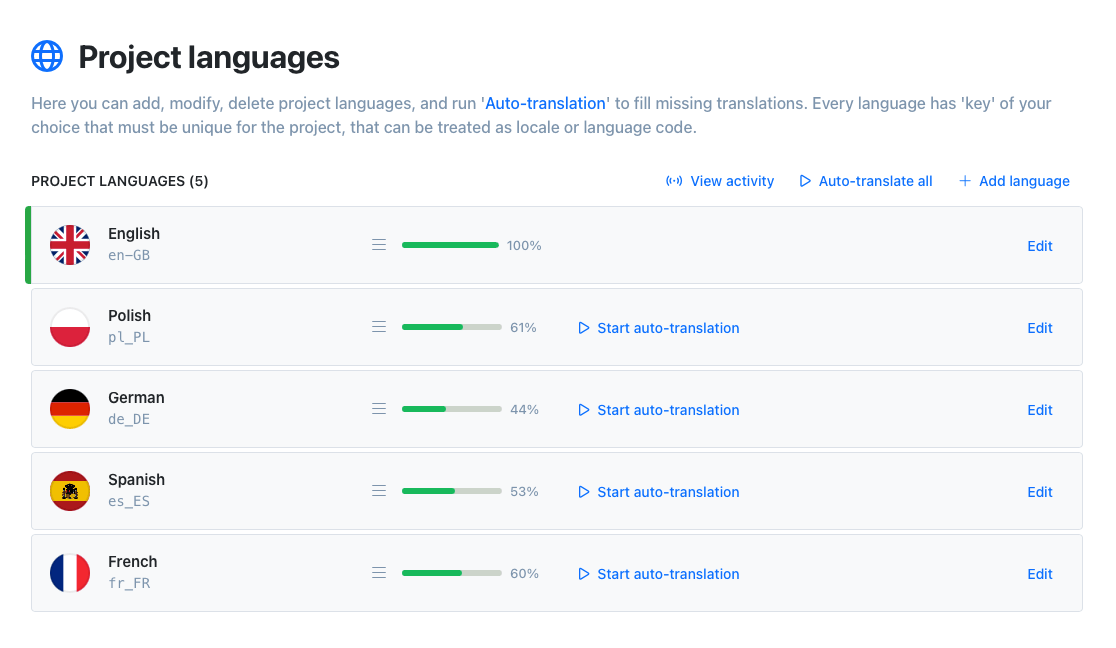
Command-line tool
With SimpleLocalize CLI you can manage your translations from the terminal. It's a powerful tool that helps you to automate the translation process in your project. You can easily synchronize translation files between you local project and SimpleLocalize Translation Editor, start auto-translation or publish changes to the production environment.
CLI documentation# upload source translations
$ simplelocalize upload
# auto-translate strings
$ simplelocalize auto-translate
# download translated files
$ simplelocalize downloadTranslation Hosting
Get your translations lightning fast with our CDN. We provide a simple way to host your translations and serve them safely to your users.
Get started with translation hosting{
"en": {
"CREATE_ACCOUNT": "Create account",
"SIGN_IN": "Sign in",
"WELCOME_TO_THE_JUNGLE" : "Welcome to the jungle"
},
"es": {
"CREATE_ACCOUNT": "Crear cuenta",
"SIGN_IN": "Iniciar",
"WELCOME_TO_THE_JUNGLE": "Bienvenido a la jungla"
}
}
Import and export
translations
SimpleLocalize supports Excel file format for importing and exporting translations. You can easily share translations with your team or import existing translations from other tools.
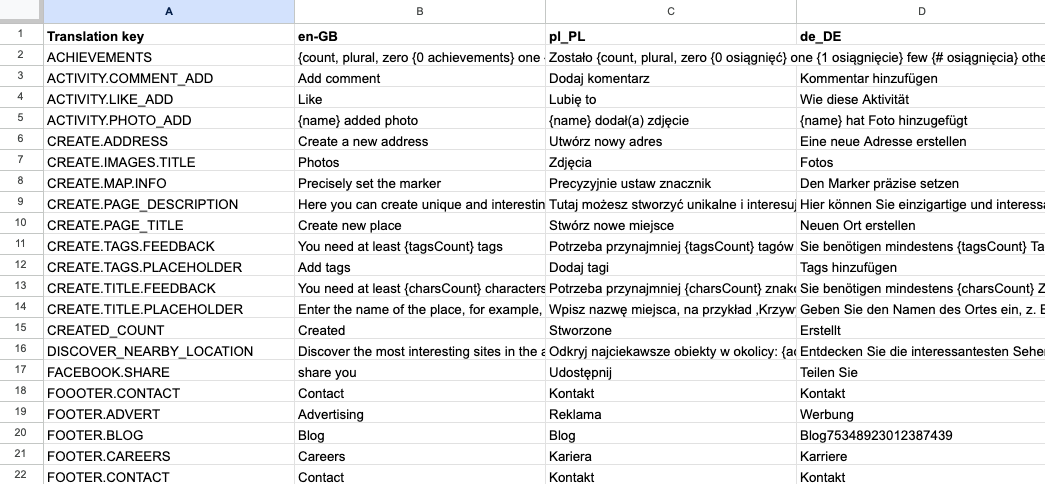
Invite your team
Invite team members to the project. Work together with native speakers from all around the world on your app translations. Share your project with your team and manage translations in one place.
Greet your customers
in their native language









